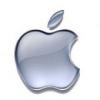-
Posts
10042 -
Joined
-
Last visited
-
Days Won
563
Content Type
Profiles
Articles, News and Tips
Forums
Posts posted by Hervé
-
-
If you have a restored image of SL or a retail SL DVD, you can do basic install with Nawcom BootCD and create a myHack installer afterwards. Failing that, you're screwed; find a Hack or a Mac...
-
This is not like crossing a wooden bridge over a tiny stream... There is no such thing as standard Hackintosh installation.
You need to start listing your entire hardware specs, clearly identifiying all major pieces of hardware that make up your system. Then you can look up for potential Mac OS support:
- CPU
- chipset
- audio
- video
- networking (wireless, bluetooth, LAN, etc.)
- trackpad
- keyboard
- etc.
Sometimes, the hardware will elude you, in which case you might have to inspect the Windows drivers to obtain hardware device id, which you can then lookup on the web for proper identification.
Your BIOS revision and settings will also need to be looked into and possibly adjusted. It's always recommended to run latest available BIOS.
Naturally, forum members shoud be able to help you once they see your hardware list, but without it.....
-
For VGA, you have 2 modes: mirror or extended.
By my own experience, the following models fully support your requirements:
- D620 GMA950
- D630 GMA X3100 (VGA in extended mode ok, in mirror mode only with lid closed)
- D630 nVidia
Lookup the other model sections (Dell and other manufacturers), I've only got experience on the D Series. Also, check the compatibility chart in EDP pages, it lists all supported features, model by model.
-
Tjmax is in the plist file of the Contents folder within the CPUMonitor package. By default, it's set to 0. Check your CPU specs on ark.intel web site and update the Tjmax value according to Intel specs.
Re: nVidia FakeSMC plugin, justr do a little search on, the web. You'll find the plugin to download (and install to /E/E).
-
Intel cards are NOT supported, replace it.
-
I can't remember if external display can be used under SL, it's too long since I last had SL on the D620 nVidia and even then, I can't remember if I ever tried it...
External screen operates on D620 GMA950, but you may experience some corruption at the botton, depending on resolution. All details are here: https://osxlatitude.com/index.php?/topic/1977-external-display-corruption-atabove-1280x1024-edp-v4-r65-and-beyond/page-1
-
There are limitations with the D620 nVidia... That one or the "gray screen" on display wake. We found no solution to these gremlins to date.
-
No, it's not normal. Install the nVidia FakeSMC plugin kext, check that your /E/E/IntelCPUmonitor kext contains the Tjmax value appropriate to your CPU and use HWMonitor to check your CPU + GPU temperatures. Maybe your laptop is running fairly hot, possibly due to clogged dust at fan entrance of hardened thermal paste on the CPU. All these can be fixed naturally.
-
Hi, start at the beginning:
- read up the web site
- read up the EDP stuff
- search the forum and, at least, read up D630 threads in the D6x0 section
-
It's not corrupt, it just won't install Lion post 10.7.3 directly.
-
Haaaa, you haven't done your homework deep/long enough... You cannot install Lion 10.7.4 directly. Or you encounter problems. It's been mentionned several times on the forum before.
You need a retail version like 10.7 or 10.7.2, at least something no higher than 10.7.3. Once you've installed one of those, our EDP tool will help you update to 10.7.5 smoothly, but, even then, make sure to download and use the "Combo update", do not update via Apple Menu -> Software update.
-
I guess you've just re-installed everything, right? If so, did you run EDP?
What you're seeing has nothing to do with partition change, you simply need to install or re-install the battery manager (like VoodooBatteryManager) because it's not loaded.
-
Hi, you should be Ok with bootpack for D630 Intel X3100 (1440x900). I assume this is the one you chose when running "install /Extra" from myHack.
Which version of Lion are you trying to install? Is it the installer that's failing or your boot attempts following installation? If you have an Intel wireless card, disable wifi or take the card out.
-
It will with the standard CPU run SL and Lion, but you will have to changed to a c2d to run ML
Doesn't Lion require C2D as a minimum too?
what was confusoing me a little was that i thought the inspiron 9400 were just core duo not core 2 duo ? quite a few i have seen all seem to be itel video as well so was unsure if ml would work on intel ?The Dell documentation bears no mention of Core2Duo for that machine but, according to Leon who had one, the 9400 will support some; I guess it could only be a FSB-667 model from the T5000/T7000 family (better to check socket too!). ML will not run on any model with Intel GMA video, well you could install it but it'd be next to unusable without graphics acceleration.
-
To install OS X on the Vostro 200, proceed with the following OSXL procedure:
- create myHack USB installer and apply Generic bootpack (= Generic /Extra)
- download Vostro 200 bootpack and save in dedicated directory
- boot installer with boot option "GraphicEnabler=No", install OS X (SL/Lion/ML) and apply Generic bootpack
- reboot with boot option "GraphicsEnabler=No" and complete the initial OS X installation
- install latest OS X combo update (SL 10.6.8 / L 10.7.5 / ML 10.8.2 at time of writing)
- using myFix -> Create Extra, install Vostro 200 bootpack and reboot
- download & install EDP, then launch EDP from /Extra folder
- do system build for Vostro 200 using pre-defined settings
- reboot to your finalised Mac OS X installation
Enjoy your hackintoshed Vostro 200!
Report any issue or pop any question in the Support section.
- - - - - - - - - -
Edit #1: 17 Feb 2013
. following feedback, updated procedure to take into account EDP5 modifications -
Now we're beginning to talk...
1st thing first: GMA 4500MHD = no ML installation or, at least, none that'll support QE/CI. You'd get full screen resolution at best, but no hardware acceleration as it's not a graphics card supported by ML. In fact, I don't believe it's supported by any versions of OS X...

-
Your system is not in our list yet, so no bootpack. As such, all the work has to be done and we'll be very happy that you contribute to add the Inspiron 1545 to EDP.
Try to install OS X with myHack + Generic Extra. If that does not work, then browse for the closest match to your machine within the list of supported systems. CPU is not that important (since a given machine can support a wide range of CPUs of a given family, sometimes even several families!), what's critical are things like chipset and graphics card.
If you get to install OS X with myHack + Generic Extra, roll up your sleeves and prepare yourself for the fine-tuning phase, i.e. adding the necessary kexts to support your specific hardware. Start by listing the complete and detailed hardware specs of your machine (CPU, chipset, RAM (Qty, type), HDD (size, type), video (card, model, resolution), networking, etc, etc.). Go look for your model's manual on Dell's web site, it should have a specifications annexe towards the end. Also prepare yourself for probable DSDT patching.
We'll help you along the way, especially with the DSDT patching. Just follow the thread about it, it details the full procedure step by step.
-
1) you install retail SL 10.6.3 through myHack+bootpack USB installer
2) you download & install EDP and run it to install your model specific kexts. You may reboot at that stage.
3) you download and run the 10.6.8 Combo update (you do not update via Apple menu Software update) and you do not reboot on completion
4) you re-run EDP to re-install your model-specific kexts
5) then you can safely reboot into SL 10.6.8
-
You simply press any key when you see Chameleon boot delay sliding bar. Keyboard operates in QWERTY mode at that point... Enter your options and/or flags and press ENTER to boot.
-
You can always try IORegistryExplorer and look at 'bundle identifier' information, but you may find the tool a little overwhelming and beware of plugins, which are kexts inside a kext...
-
Just so that you know, an alternative to you as last resort if you're not getting anywhere: Nawcom BootCD + temp SL installation. I do insist on 1) "alternative" and 2) "last resort" because it probably can/will appear as a complicated route. True, but it's guaranteed to get you there. The added trouble of course is that it requires you to have either a retail SL DVD or a restored image of retail SL on a USB stick, since Nawcom ModtCD is for Snow Leopard.
You'll find all the necessary details with a little search on the forum (I've detailed it several times). You would not be wrong to think of it as a complicated way to just build a myHack installer, but it's one guaranteed to get you there with a legit retail SL/L/ML copy if using a real Mac or a VM gets you nowhere.
-
First of all, kexts usually have meaningful names... Eg: '80211xxx' obviously relates to Ethernet/networking, 'ATIRadeonX1000' obviously relates to ATI Radeon X1000 series graphics cards, 'xxxPS2xxx' obviously relates to keyboards and mice, 'IOATAxxx' obviously relates to disk controllers, etc. If you know ziltch about computers/IT technology, you're up for a challenge!
Secondly, OS X does not load a device-related kext unless it is required. For example, if you have an nVidia graphics card, it won't load the ATI or Intel drivers, only the relevant nVidia kext. Naturally, you're expected to have the correct kext that supports your HW... To spice things a little more, sometimes you have to patch (=edit) an existing kext so that it supports your hardware! In such cases, you really have to get pretty familiar with your hardware and fairly computer-litterate.
-
ANV-Slice works without defect on the D830 nVidia 135m that I've built; never lost the keyboard our trackpad.
What options did you choose when opting for your own values when you re-ran EDP kext installation? Are your BIOS parameters set as per recommended settings?
-
You can install Win7 on GUID partitioned HDD, that's what I have:
That "recovery" partition, as you call, is automatically created when you re-partition your available disk space from Win7 installer. You can delete it of course (use Win disk manager for that), but that's gonna remain wasted disk space; you can't add that subsequently to the main Win7 partition as far as I know. The trick is to create your Win7 target partition prior to running the Win7 installer, so that you simply point to it when the installer asks you where you want Win7 to be installed. You can simply create a DOS partition from Mac OS X that you just reformat NTFS at Win7 installation.
Then you'll have to play with 'diskpart' command to change bootable partition and may have to re-install Chameleon.




Dell Latitude E6520 Mountain Lion
in The Archive
Posted
iMessage, yes that is due to some recent changes Apple made, but help is on the way and there is now a Chameleon fix for it.
Facetime, check the web site blog and adjust your settings as detailed. I assume your webcam is compatible.